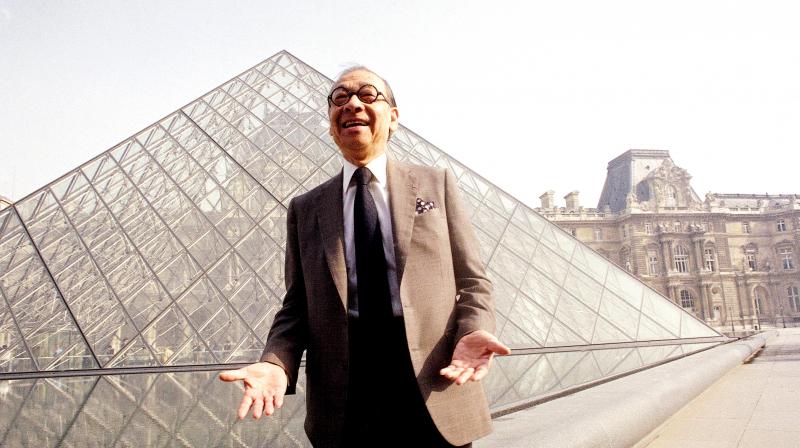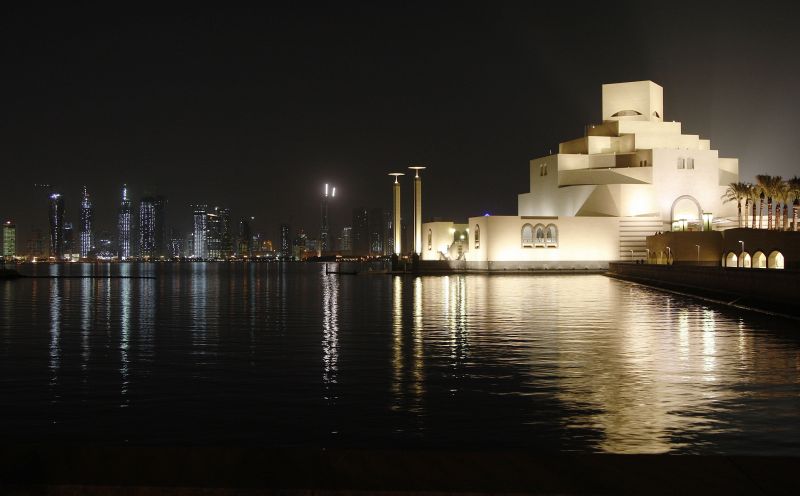I M Pei: Iconic architect of the Louvre Pyramid passes away
The legendary architect was known to thoroughly research his projects and firmly believed in the art of architecture.

New York: I M Pei, the versatile, globe-trotting architect who revived the Louvre with a giant glass pyramid and captured the spirit of rebellion at the multi-shaped Rock and Roll Hall of Fame, died at age 102. Pei's death was confirmed Thursday by Marc Diamond, a spokesman for the architect's New York firm, Pei Cobb Freed & Partners.
One of Pei's sons, Li Chung Pei, told The New York Times his father had died overnight. Pei's works ranged from the trapezoidal addition to the National Gallery of Art in Washington, DC, to the chiselled towers of the National Centre of Atmospheric Research that blend in with the reddish mountains in Boulder, Colorado.
 The Museum of Islamic Art (foreground) designed by architect I M Pei and the skyline of Doha, Qatar. (Photo: AP)
The Museum of Islamic Art (foreground) designed by architect I M Pei and the skyline of Doha, Qatar. (Photo: AP)
His buildings added elegance to landscapes worldwide with their powerful geometric shapes and grand spaces. Among them are the striking steel and glass Bank of China skyscraper in Hong Kong and the Fragrant Hill Hotel near Beijing.
His work spanned decades, starting in the late 1940s and continuing through the new millennium. Two of his last major projects, the Museum of Islamic Art, located on an artificial island just off the waterfront in Doha, Qatar and the Macau Science Center, in China, opened in 2008 and 2009.
Pei painstakingly researched each project, studying its use and relating it to the environment. But he also was interested in architecture as art and the effect he could create. "At one level my goal is simply to give people pleasure in being in a space and walking around it," he said. "But I also think architecture can reach a level where it influences people to want to do something more with their lives. That is the challenge that I find most interesting."
 Pedestrians walk past the Bank of China building in Hong Kong designed by the renowned architect I M Pei. (Photo: AP)
Pedestrians walk past the Bank of China building in Hong Kong designed by the renowned architect I M Pei. (Photo: AP)
Pei, who as a schoolboy in Shanghai was inspired by its building boom in the 1930s, immigrated to the United States and studied architecture at the Massachusetts Institute of Technology and Harvard University. He advanced from his early work of designing office buildings, low-income housing and mixed-used complexes to a worldwide collection of museums, municipal buildings and hotels.
He fell into a modernist style blending elegance and technology, creating crisp, precise buildings. His big break was in 1964, when he was chosen over many prestigious architects, such as Louis Kahn and Ludwig Mies van der Rohe, to design the John F Kennedy Memorial Library in Boston.
At the time, Jacqueline Kennedy said all the candidates were excellent, "But Pei! He loves things to be beautiful." The two became friends. A slight, unpretentious man, Pei developed a reputation as a skilled diplomat, persuading clients to spend the money for his grand-scale projects and working with a cast of engineers and developers.
Pei officially retired in 1990 but continued to work on projects. Two of his sons, Li Chung Pei and Chien Chung Pei, former members of their father's firm, formed Pei Partnership Architects in 1992. Their father's firm, previously I M Pei and Partners, was renamed Pei Cobb Freed & Partners.
Ieoh Ming Pei was born April 26, 1917, in Canton, China, the son of a banker. He later said, "I did not know what architecture really was in China. At that time, there was no difference between an architect, a construction man, or an engineer."
Pei came to the United States in 1935 with plans to study architecture, then return to practice in China. However, World War II and the revolution in China prevented him from coming back.
In 1948, New York City real estate developer William Zeckendorf hired Pei as his director of architecture. During this period, Pei worked on many large urban projects and gained experience in areas of building development, economics and construction. Some of his early successes included the Mile High Center office building in Denver, the Kips Bay Plaza Apartments in Manhattan and the Society Hill apartment complex in Philadelphia.
Pei established his own architectural firm in 1955, a year after he became a US citizen. He remained based in New York City. Among the firm's accomplishments are the Jacob Javits Convention Center in New York City and the United States Holocaust Memorial Museum in Washington. Pei's wife, Eileen, who he married in 1942, died in 2014. A son, T'ing Chung, died in 2003. Besides sons Chien Chung Pei and Li Chung Pei, he is survived by a daughter, Liane.

